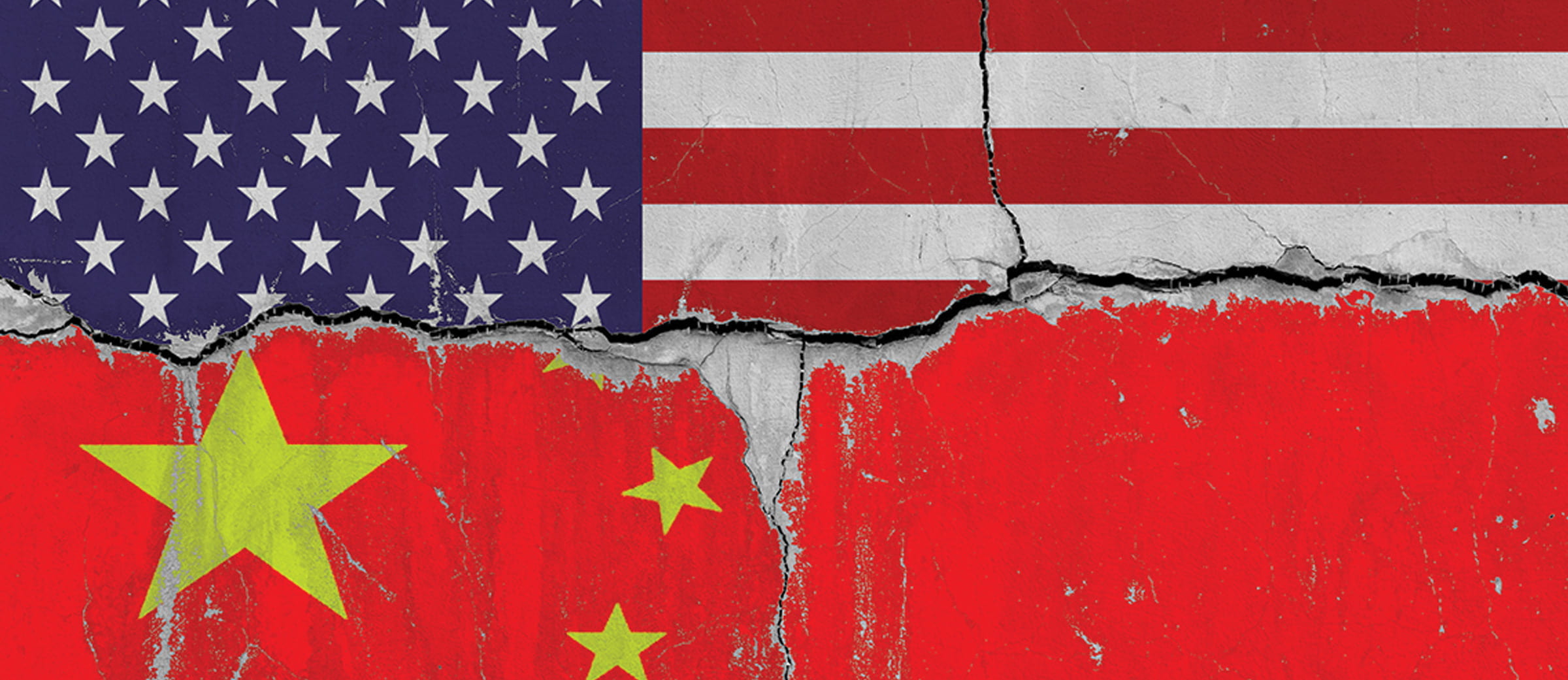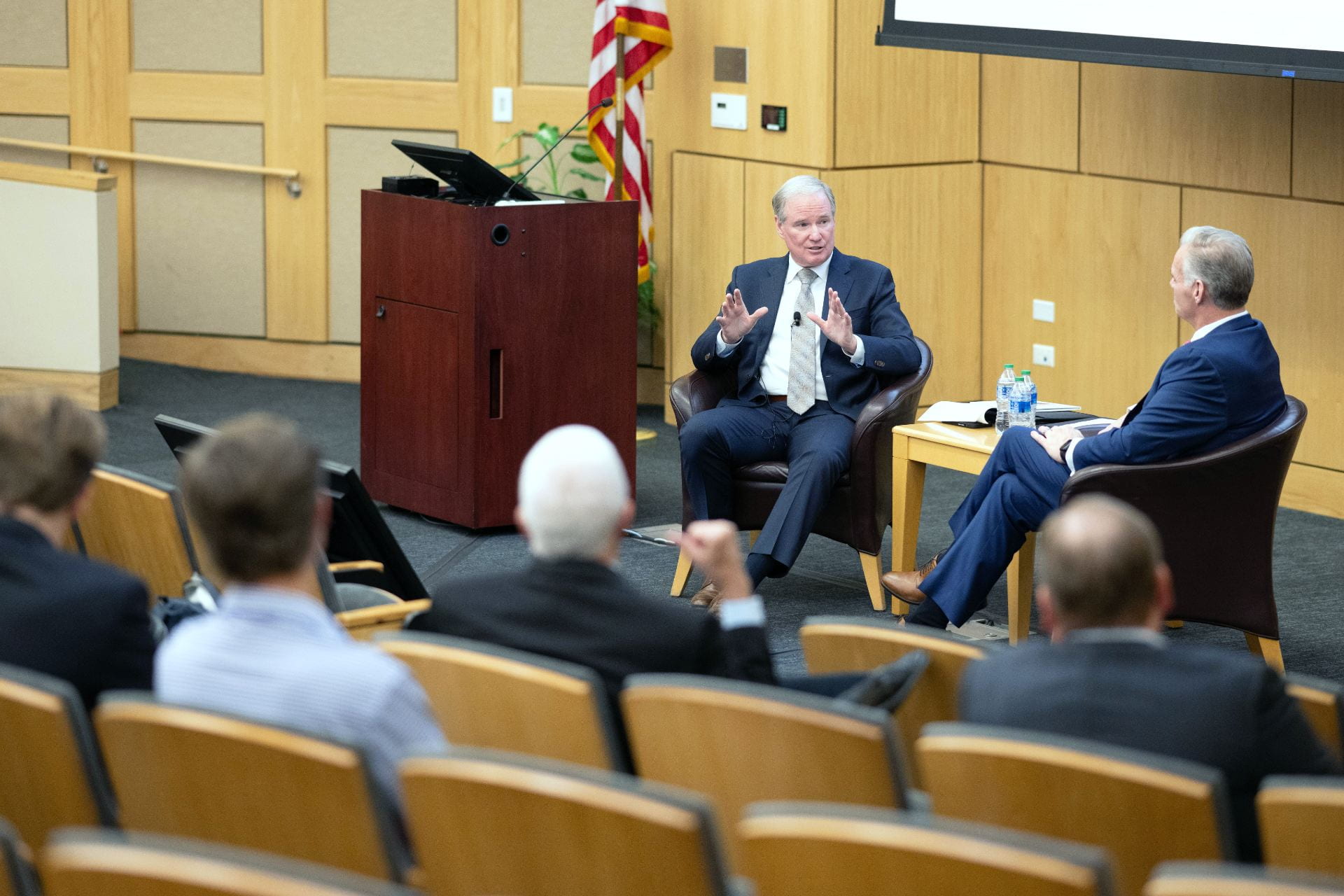Protectionism in trade has been a populist theme running through campaigns and government halls around the globe. In the U.S., the trade war with China and the renegotiation of NAFTA are two major events crystallizing in the atmosphere. Some believe it’s a reaction to globalization. Others point to the decline of manufacturing in America. The spat with China, according to the Trump Administration, is predicated on unfair trade practices and the theft of intellectual property. Their solution is tariffs. Since the summer of 2018, the U.S. and China have exchanged tariff threats in quick succession. By late September, nearly $235 billion in Chinese exports were affected by U.S. tariffs, according to The Economist.
“Tariffs are never the best way to address conflicts in trade,” notes SMU Cox Dean Myers. There was a suboptimal trade negotiation that needed to be addressed, he says, and relative to intellectual property, it has always been a problem with China, as well as other countries.
“Protectionism imposes real costs on Americans, and tariffs are taxes. It limits America’s opportunities to influence the world.”
According to Mike Davis, Cox business economics professor and senior lecturer, “First, protectionism imposes real costs on Americans, and tariffs are taxes. Second, it limits America’s opportunities to influence the world.”
“Tariffs don’t work in isolation,” says Myers. “They relate to everything else, such as the Iran nuclear deal, Brexit, and events in Latin America. As our relationships deteriorate, the ability to develop good trade policy deteriorates as well.”
Uncertain Roots
The World Trade Organization and the United Nations have not stepped up and held the Chinese accountable, notes Myers. “There are opportunities to renegotiate deals that specify industrial sectors and timelines,” he says.
“We went straight to tariffs with China for political expediency.” Trade negotiations are likened to a 3D- chessboard, Myers adds, where one move impacts the next.
“Tariffs don’t work in isolation. They relate to everything else, like the Iran nuclear deal, Brexit, and events in Latin America. As our relationships deteriorate, the ability to develop good trade policy deteriorates as well.”
Jobs losses and the decline of manufacturing have been put forth as a rationale for the trade wars with China and other countries. Davis observes, “To clarify, manufacturing in the U.S. hasn’t declined; it is close to the same share of real GDP as it has been for the past 50 years. The number of people working in manufacturing has declined.” Davis believes this implies that imports and China aren’t really implicated. “Technological change means that manufacturers just need to hire fewer people than before,” Davis offers.
The latest tranche of tariffs aimed at China will hit businesses’ costs. As an expert in supply chains and economic development, Dean Myers believes uncertainty created for business will have longer lasting negative effects. “The capability to effectively forecast, which is key for companies to be efficient and offer consumers lower prices, gets thrown out the window with constantly changing tariffs,” he says.
Closer to Home
The original North American Free Trade Agreement was signed into law in 1993. Thanks to NAFTA, trade with Canada and Mexico supported 14 million American jobs and accounted for nearly $500 billion in U.S. exports as of early 2018. The renegotiation of NAFTA is symbolically important, says Myers. “It shows we value our relationships across borders.” Myers spent time with SMU’s Tower Center for Political Studies this past year in Monterrey, Mexico City and El Paso.“The people on the border are more engaged and optimistic about the relationship with Mexico and cannot understand why the rest of the country is so anxious,” he says “On the political side, people tried to weaponize the NAFTA renegotiations.”

Texas accounted for about 11 percent of total U.S. imports in 2017, notes the O’Neil Center’s Michael Cox and Rick Alm. Texas is particularly intertwined with the fate of NAFTA: almost half of Texas’ imports are from Mexico and Canada. Bilateral trade between Texas and Mexico totaled $173 billion in 2016, with Texas running a surplus of $11 billion, according to a study by SMU’s Mission Foods Texas-Mexico Center. Mexico is Texas’ largest export market.
“We seem to be willing to default on American leadership in order to meet special interest needs domestically. It’s going to take a long time to regain our position.”
The energy trade also plays an increasingly important role between the three countries. The U.S. shale boom in natural gas has benefited from Mexico’s increased demand and Canada is America’s largest source of crude oil imports, with about 4 million barrels of the 10 million imported per day.
“NAFTA, while not a true free trade area, is instrumental in the strength of the three economies,” Myers offers.
Global Headwinds
The Paris Climate Accord has large trade implications because of the fairness and equity in production, new materials and the use of energy, according to Myers. “Our trade relations with China impact our trade relations with Mexico, and influence any role we may have in future Climate Accords.”
Free and fair trade is important for the health of our democracy. “We seem to be willing to default on American leadership in order to meet special interest needs domestically,” Myers observes. “It’s going to take a long time to regain our position.”














